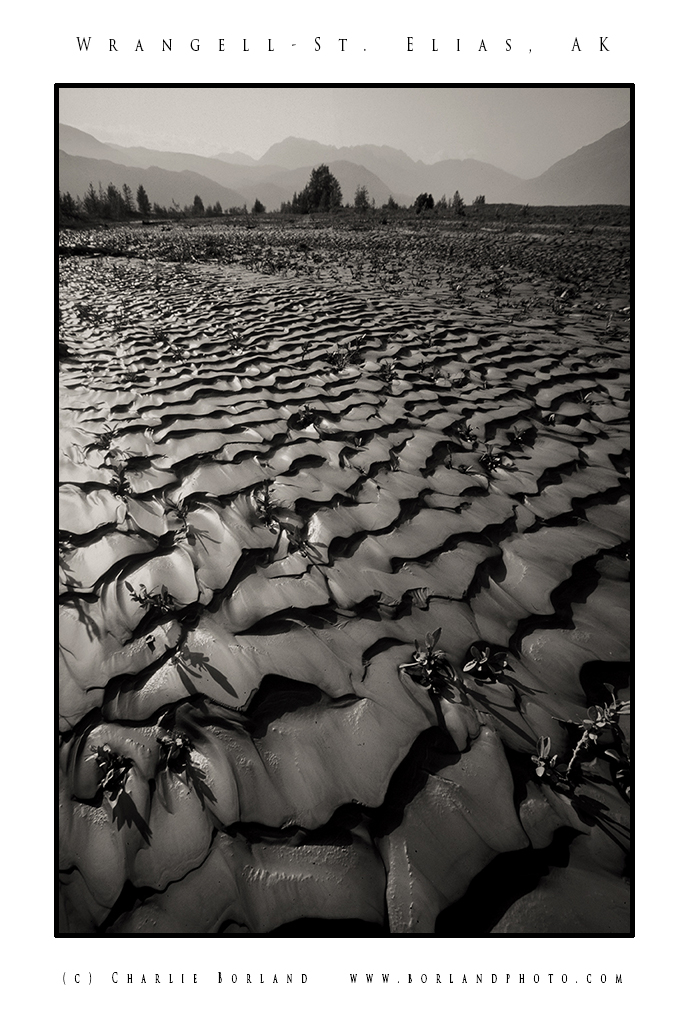


As I was hiking the desert this last winter, I spotted an area where rain had collected and created this pattern. What I thought was very interesting was how the mud was totally wet and then following the cracks, totally dry. It made for a nice composition was my feeling and I shot it with an iPhone.
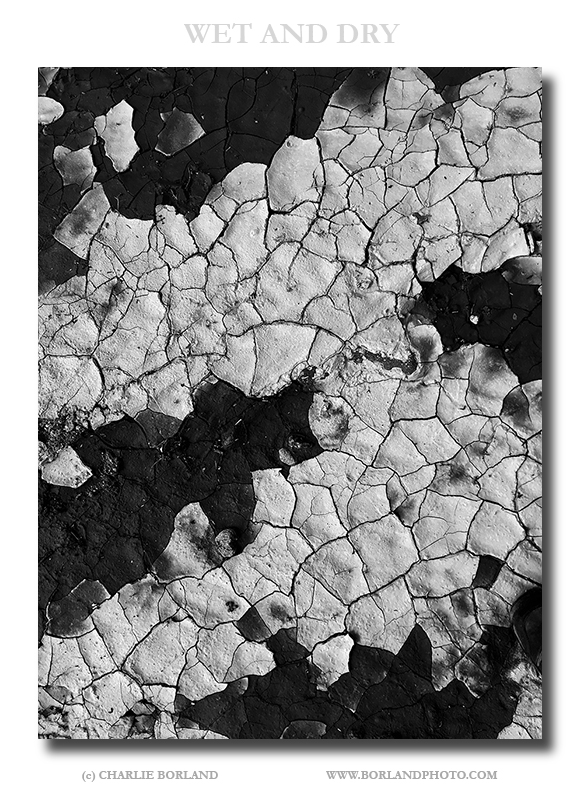
But you can see by this pre-processed image below, the photo would not work without some good processing since it was totally flat looking.
This is one of the most amazing places I have ever shot! It’s part of Grand Staircase-Escalante NM, Utah.
The soft light is very flat lighting: no whites and no blacks, just light grays and dark grays, so you have to create the black and white. But do you need them?
Honestly, I struggled to find my ‘look.’ The original file has a blue cast from the blue sky above, so I worked that a bit: added blue/took away blue, saturated, added contrast, then took it all away. Today, I decided to do B&W and high contrast. Tomorrow, who knows.
I have been experimenting when time allows with variations of B&W images. I like HDR although admit that the days of super grunge are over for me. All the color globs and noise….been there, processed that!
HDR has come a long way and now I use it more for creating natural looking images with lower contrast like some architectural assignments I get for time to time.
I have photographed some objects over time where i went crazy with grungy HDR but now I prefer to process more normal and then maybe with a hint of grunge…then converting to B&W.
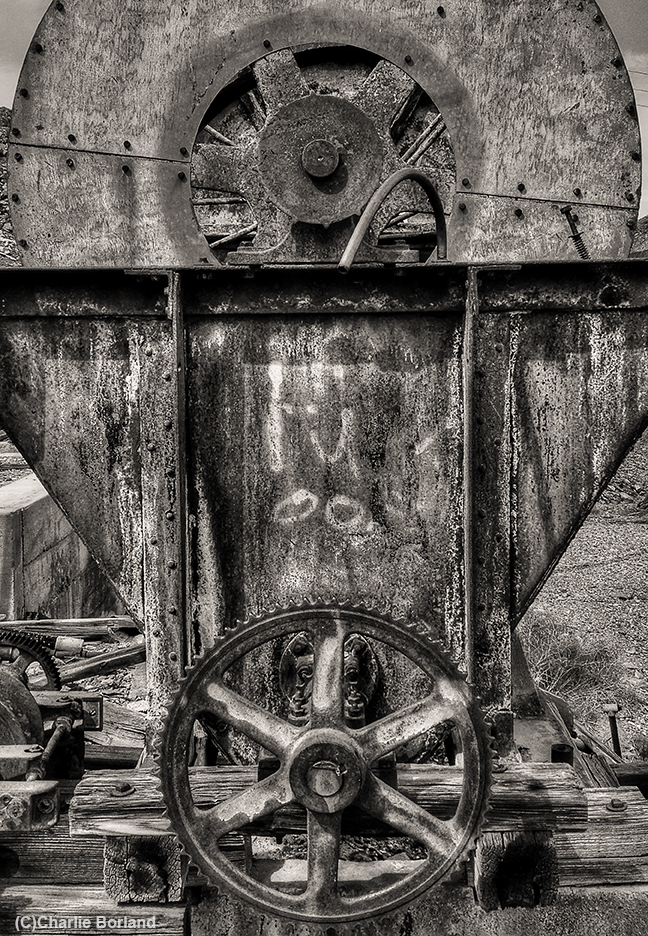 Here is a piece of equipment at an old mine in Arizona that I processed in HDR and as color then converted to B&W and pushed around a few of the tones with a B&W Adjustment Layer. The HDR does a good job of adding edge to textures and then those are converted to tones in B&W. This next image
Here is a piece of equipment at an old mine in Arizona that I processed in HDR and as color then converted to B&W and pushed around a few of the tones with a B&W Adjustment Layer. The HDR does a good job of adding edge to textures and then those are converted to tones in B&W. This next image
I was just hiking around Sajuaro NP really hoping to find blooming cactus, but it is to early still. They will be blooming in the next few weeks, but I am an impatient traveler choosing to move to new locals and scenery. I did however grab a lot of other images including this detail of a barrel cactus which I then converted to B&W using Topaz B&W Effects. It seemed more interesting than color image.
We recently visited the Desert Bar outside Parker Arizona and if you have not been there it is worth the visit. It’s an old mine that someone bought and turned into a huge bar. Very cool!
On the property are many old vehicles like this one. I shot it and then converted it using Topaz BW Effects. They just came out with version 2. I then brushed back some of the color.
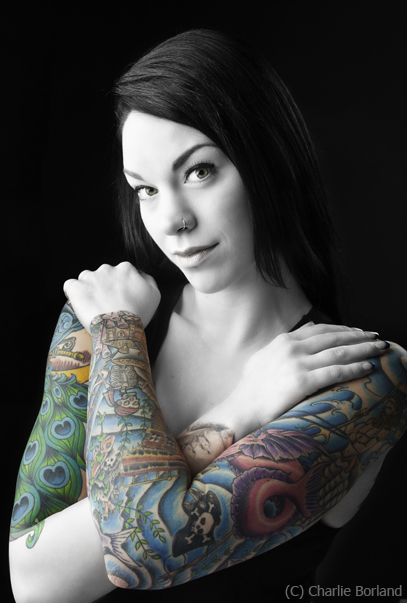 Every once in a while I meet a great person and get all excited at the prospect of photographing them.
Every once in a while I meet a great person and get all excited at the prospect of photographing them.
That happened the other night when I was teaching an Introduction to Portraiture at the Cascade Center of Photography in Bend, Oregon.
The school proprietors: Christian and Regula Heeb, had arranged this model for the workshop and when it was time to do some demos shots of her for the students to see lighting, I thought: “wow”, this is a very photogenic person.
After the workshop she stuck around for a few minutes and we shot a few more images and discussed more shoots in the future.
I used two large light boxes and then some skin softening in Portrait Professional before a B&W conversion in Topaz B&W Effects.
Grungy HDR is a lot of fun and once in awhile I have some free time (rare) to open images and just play. I took this shot in Nevada City Montana a few years ago after a workshop up there. It was one of many I shot in the NC area which is a gold mine (no pun intended) of historic buildings and artifacts from the mining days.
This old railroad car sat next to an old locomotive and a few other old cars. They were rusting and had peeling paint, and that makes them perfect for HDR or B&W with Sepia tone, or……? Let your imagination run wild.
The key to grungy HDR is Tone Mapping more than once and then what I have enjoyed doing is converting to B&W with Topaz B&W Effects and then using the Adjustment Brush to bring back color. What do you think?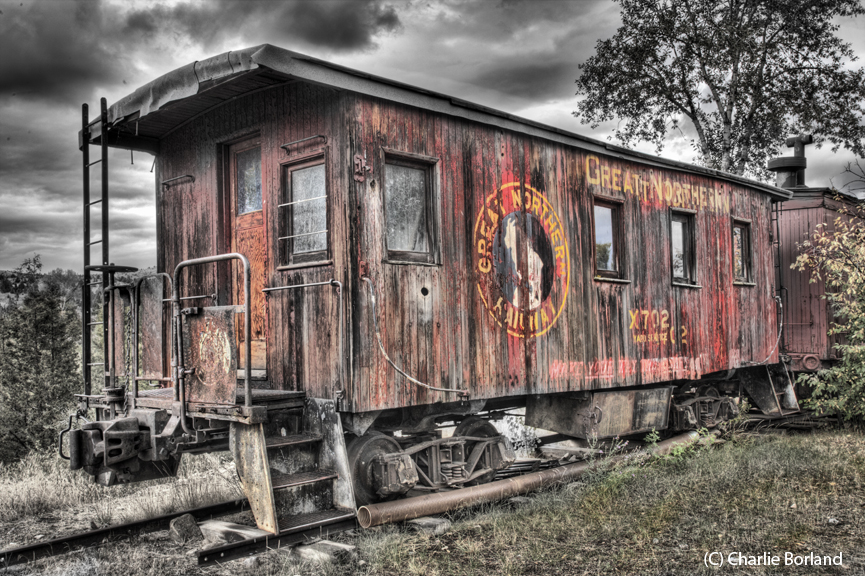
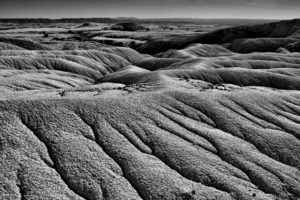 I wrote a brief article for Topaz Software’s Pro Insights Ezine on how much i like their B&W software and you can read it here.
I wrote a brief article for Topaz Software’s Pro Insights Ezine on how much i like their B&W software and you can read it here.
I was teaching workshops in South Dakota a few months back and before catching my flight I had the afternoon to kill so I zipped out to Badlands National Park and spent 4 hours shooting.
It is a great park to shoot and I had a great time, albeit brief. I am also a big fan of Topaz software and processed some of the images in B&W Effects from Topaz. The reason i did that was because early in my shooting the sun was quite high and there was haze on the horizon.
When you have the haze it desaturates the sky and is not so appealing. Convert to B&W and the sky is a shade of gray and works much better. Here are some shots: